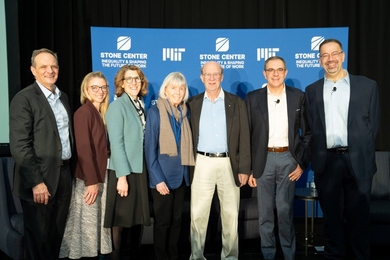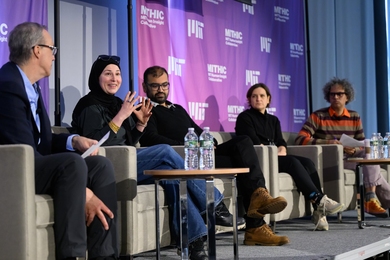A group of enzymes known as sirtuins have gained fame in recent years for their ability to slow the aging process. Now, researchers at MIT's Picower Institute for Learning and Memory and Harvard Medical School report that one particular sirtuin-producing gene is a link between aging and human neurodegenerative disorders.
The work may lead to new drugs against Alzheimer's disease, amyotrophic lateral sclerosis (also known as Lou Gehrig's disease) and other debilitating neurological diseases.
The SIR2 (silent information regulator) gene and sirtuin, the enzyme it produces, promote longevity in a variety of organisms and may be tied to the health benefits of caloric restriction, which delays aging and neurodegeneration in mammals.
In work published in a recent issue of the journal of the European Molecular Biology Organization, Li-Huei Tsai, Picower Professor of Neuroscience in the Department of Brain and Cognitive Sciences, and colleagues reported that SIRT1, the analogous human version of SIR2, "constitutes a unique molecular link between aging and human neurodegenerative disorders and provides a promising avenue for therapeutic intervention."
Progressive loss of nerve cells, or neurons, with age underlies a variety of debilitating neurological disorders, including Alzheimer's and Lou Gehrig's disease, yet few effective treatments are currently available, Tsai said. "In our cell and mouse models for those two disorders, SIRT1 and resveratrol, a SIRT1-activating molecule, both promoted neuronal survival, reduced neurodegeneration and prevented learning impairment," she said.
The latest study is an extension of work reported over the past several years by co-author Dr. David A. Sinclair of Harvard Medical School. He has shown that resveratrol, a natural plant substance found in red wines, is one of a class of chemicals that mimics the effects of a very low-calorie diet, which is known to lengthen the life span of rodents. Scientists say that human life spans could be extended by 30 percent if humans respond to the chemicals in the same way as rats and mice do to low calories.
Preventing loss of neurons
SIRT1 is thought to be a key regulator of an evolutionarily conserved pathway that allows organisms to cope with adversity. These genes and the enzymes they produce are part of a feedback system that enhances cell survival during times of stress, especially if that stress is a lack of food.
In the current study, the researchers increased SIRT1 activation in mice. Furthermore, injecting SIRT1 directly into the brains of mice genetically engineered to experience neurotoxic conditions "conferred significant protection against neurodegeneration," the authors wrote.
While SIRT1 is the human counterpart of the SIR2 gene previously studied in rodents, it is common to use the human counterparts of genes for transgenic models for neurodegeneration, Tsai said. "Such an approach may make it slightly more relevant to studying human disease. Likewise, while the mouse version of the gene will probably have a similar effect, our positive results showing therapeutic potential of human SIRT1 overexpression provides a little bit more promise that such an approach may translate to benefits in humans."
Exploring the underlying mechanisms for inducing SIRT1 through neurotoxic stresses and investigating compounds that may activate SIRT1 are among the lab's future goals.
In addition to Tsai and Sinclair, co-authors included Dohoon Kim, a graduate student in the MIT Department of Brain and Cognitive Sciences; Picower Institue technical assistant Matthew M. Dobbin; Picower Institute research affiliate Andre Fischer; MIT affiliate Farahnaz Sananbenesi; Picower Institute research affiliate Ivana Delalle, and other researchers from Harvard Medical School.
This work was supported by the National Institutes of Health, the National Institute of Aging, the Canadian Institutes of Health Research and the Paul F. Glenn Foundation for Medical Research.







